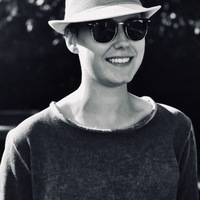Drafts by Nathalie Entringer

Language experiments have a long tradition in the field of dialectology to investigate phonologic... more Language experiments have a long tradition in the field of dialectology to investigate phonological, lexical and syntactic variation. Methodologically, the repertoire ranges from written test procedures to standardized language production tests and interviews whereby different types of tasks (e. g. translation, picture-naming, evaluation tasks) are used. In order to investigate the variation and perception of morphological phenomena (e. g. the variation of the superlative dat schéinst / dat schéinsten / dat schéinstent Meedchen 'the most beautiful girl') in Luxembourgish, I developed a new test procedure, which is based on test procedures and tasks already used in other dialectological and variationist projects (e. g. Syntax Hessischer Dialekte (SyHD), Sprachvariation in Norddeutschland (SiN)). The development of a new method was indispensable, since firstly, it must be adapted to the analysis of morphological phenomena that are not linked to regional variation and secondly this test aims to analyse salience and pertinence, two relevant concepts within the scope of language perception and evaluation (cf. Purschke 2011), separately. This paper thus presents an experiment that aims to investigate the perception of morphological variation and its variants in Luxembourgish. The individual test procedures, a salience test, a specific form of scale-based test, a translation task and a supplementary questionnaire are described, contextualized and discussed in detail. The focus also lies on the special design of the test, which enables the researcher to ascertain the salience and pertinence of certain variants and to correlate them directly with the production of the variants and the self-evaluation of the individual participants.
Linguistic Vanguard
The mobile app Schnëssen is intended to establish a state-of-the-art
digital platform to collect ... more The mobile app Schnëssen is intended to establish a state-of-the-art
digital platform to collect data on the present-day language situation of
Luxembourgish by means of crowd-sourcing and to document and
present results to a broader public. Users can participate in a large set of
audio recordings tasks and in sociolinguistic surveys. By presenting all
audio recordings via an interactive map, participants can explore the
language variation of their language. In the first year of data collection,
around 210.000 recordings could be collected for numerous variation
phenomena from all linguistic levels and over 2800 sociolinguistic
questionnaires have been filled out. The app allowed us to compile thus
the largest systematic spoken language corpus of Luxembourgish.
Papers by Nathalie Entringer

Intra-individual variation in language, 2021
As a young and comparatively little-standardised Germanic language, Luxembourgish is characterise... more As a young and comparatively little-standardised Germanic language, Luxembourgish is characterised by a very high degree of variation, which in many cases is still unexplored. This also applies to the morphological variation of the superlative (dat schéinst / dat schéinst-en / dat schéinst-en-t Päerd 'the most beautiful horse') and the adjectival participle (e gefëllt-en / e gefëllten-e Croissant 'a filled croissant'). This empirical study is the first attempt to fill this research gap. On the one hand, the chapter aims to explore the variation of these phenomena from a more classical perspective, that is, by analysing inter-individual variation (IEV); the purpose of it is to identify possible linguistic and social constraints that influence the variation. On the other hand, the chapter also focuses on intra-individual variation (IAV), i.e. variation within a speaker that is situationally independent. This analysis aims to evaluate the results of the IEV perspective and also to reveal further specificities of the variation. Studying a large corpus of crowd-sourced speech data leads to several findings. It becomes apparent, for example, that part of the morphological variation can be explained by the influence and interaction of different linguistic factors. Furthermore, there is evidence that IAV manifests in various forms: as the expression of individual linguistic preferences, as the expression of linguistic insecurities and as the expression of language change.

Uploads
Drafts by Nathalie Entringer
digital platform to collect data on the present-day language situation of
Luxembourgish by means of crowd-sourcing and to document and
present results to a broader public. Users can participate in a large set of
audio recordings tasks and in sociolinguistic surveys. By presenting all
audio recordings via an interactive map, participants can explore the
language variation of their language. In the first year of data collection,
around 210.000 recordings could be collected for numerous variation
phenomena from all linguistic levels and over 2800 sociolinguistic
questionnaires have been filled out. The app allowed us to compile thus
the largest systematic spoken language corpus of Luxembourgish.
Papers by Nathalie Entringer
digital platform to collect data on the present-day language situation of
Luxembourgish by means of crowd-sourcing and to document and
present results to a broader public. Users can participate in a large set of
audio recordings tasks and in sociolinguistic surveys. By presenting all
audio recordings via an interactive map, participants can explore the
language variation of their language. In the first year of data collection,
around 210.000 recordings could be collected for numerous variation
phenomena from all linguistic levels and over 2800 sociolinguistic
questionnaires have been filled out. The app allowed us to compile thus
the largest systematic spoken language corpus of Luxembourgish.